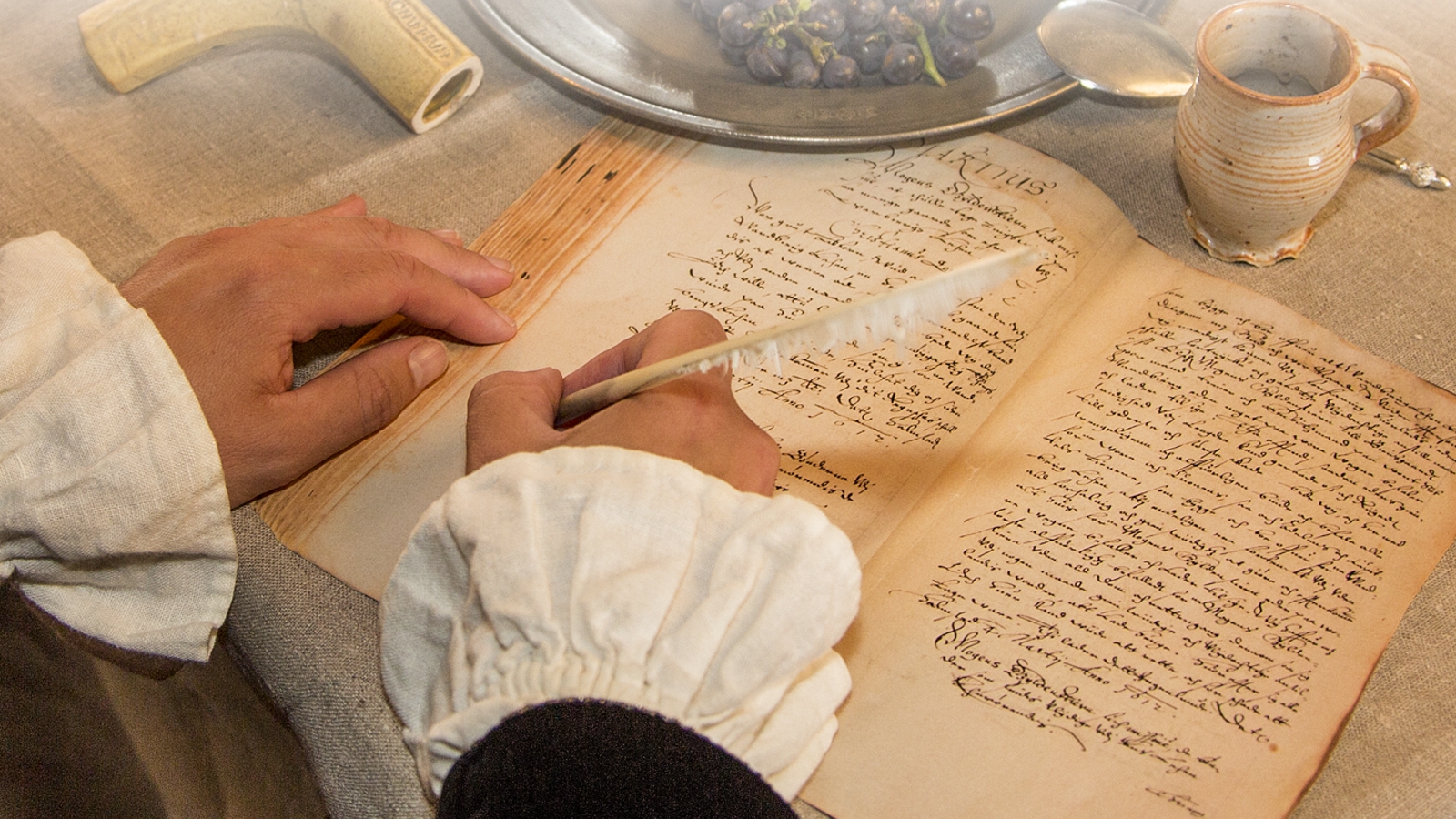
The historical sources
How do we know?
Where does the information about the fortress workers come from? For those who have mastered the art of interpreting the ornate writing style of the 17th century and also understand the Danish language of the time, the National Archives in Copenhagen is a real goldmine. Here is a bundle of bills with accounts, receipts, court documents, lists of tax payments and much more that can give us clues and access to life in 17th-century Halland.
The main source of information about the workers at the fortress is the accounts kept about the construction and the daily operation of the fortress.
Not all the material has been preserved, far from it, but a lot has. The person we can thank for this is the last Danish feudal lord in Varberg, Iver Krabbe. During the years after his accession as feudal lord in 1636, he participated in the battles against the Swedes and worked intensively to provide the fortress with provisions and weapons. After the truce in Brömsebro in 1645, Halland became Swedish. Iver Krabbe was the person who had to hand over the fortress into the hands of the Swedes. He appealed to Christian IV to refrain from attending the actual surrender, but his entreaties were not listened to. Before the Swedish Major-General Kagg took over the fortress on 16 September the same year, Krabbe made sure to empty the castle and the fortress of everything that the Swedes could benefit from – cannons, weapons, ammunition, provisions and not least of all documents in Varberg County Archives, which were now transported to Copenhagen.
In the material that has been preserved, we can see that an accurate and detailed book of income and expenses for the construction has been kept. But interpreting the old documents is not always so easy for us today. Even if you manage to master the writing itself, there are some trick aspects in the spellings and sentence formulations.
Video
Anna Karlsson and Andreas Karlsson are dedicated genealogists who draw their source material mainly from 17th century Danish manuscripts. In this way, they have built up in-depth knowledge about the inhabitants of 17th-century Halland. In the video (in swedish) they tell us about the sources that are preserved from the time of the fortress construction and what we can learn from them.
